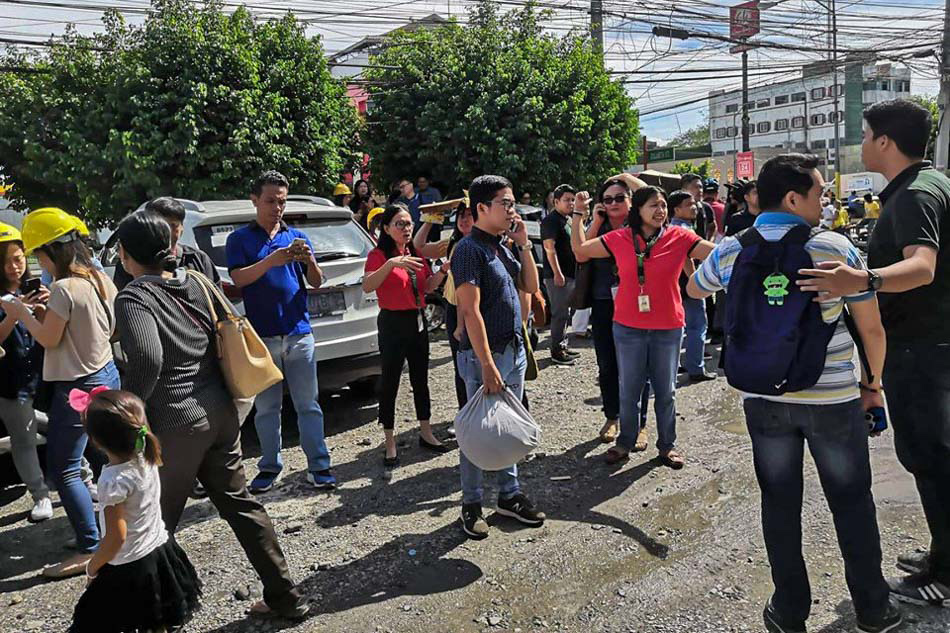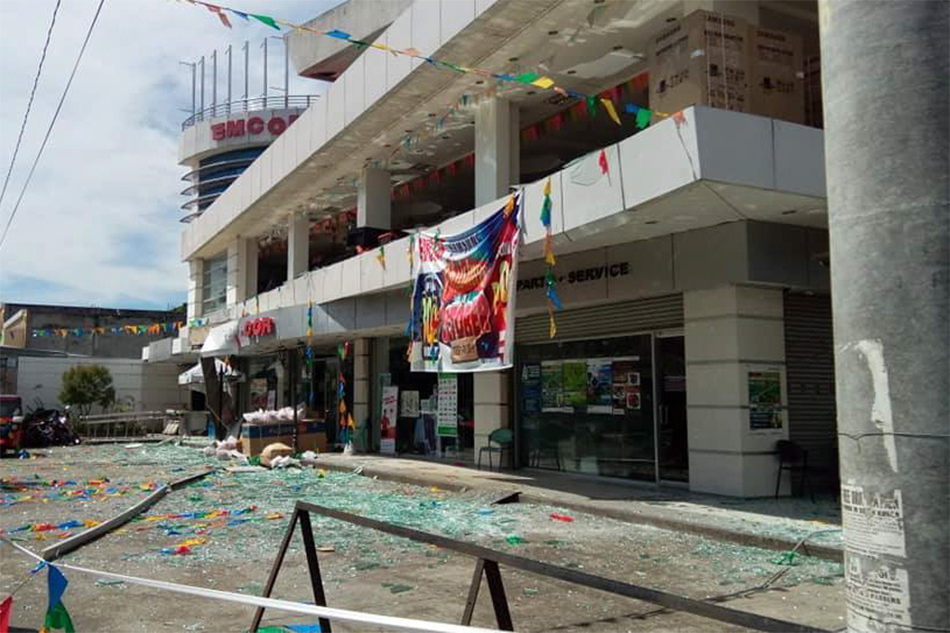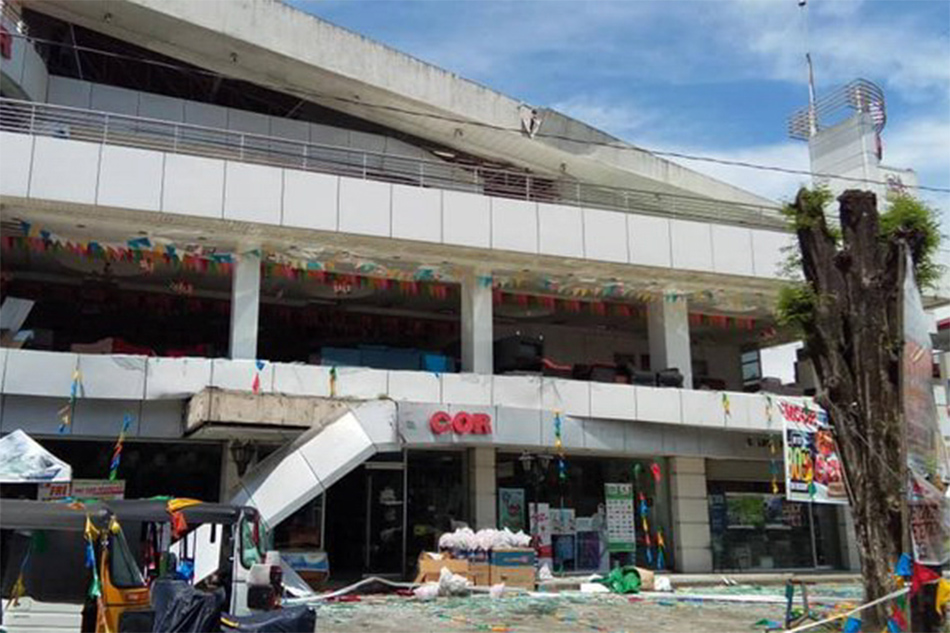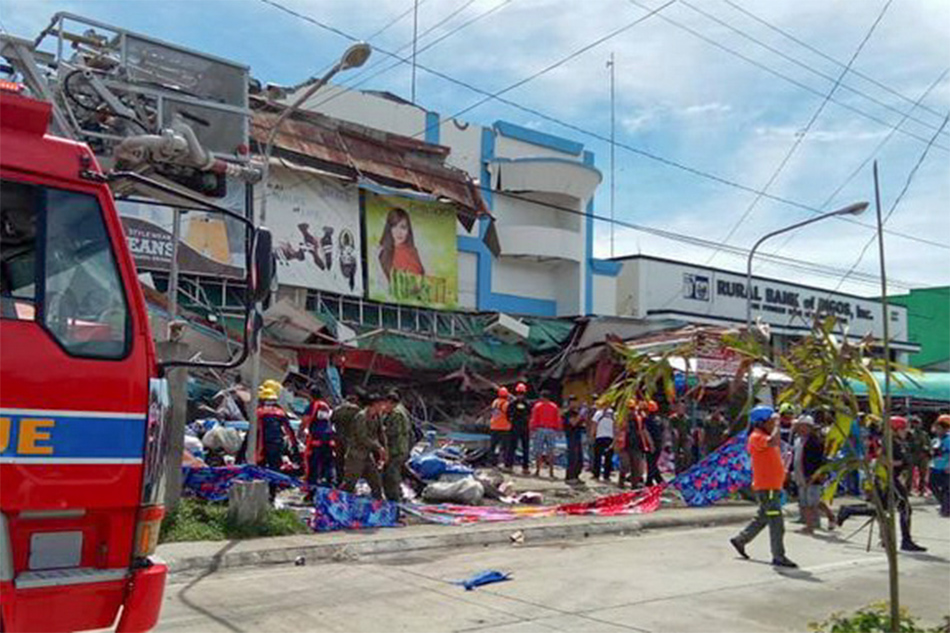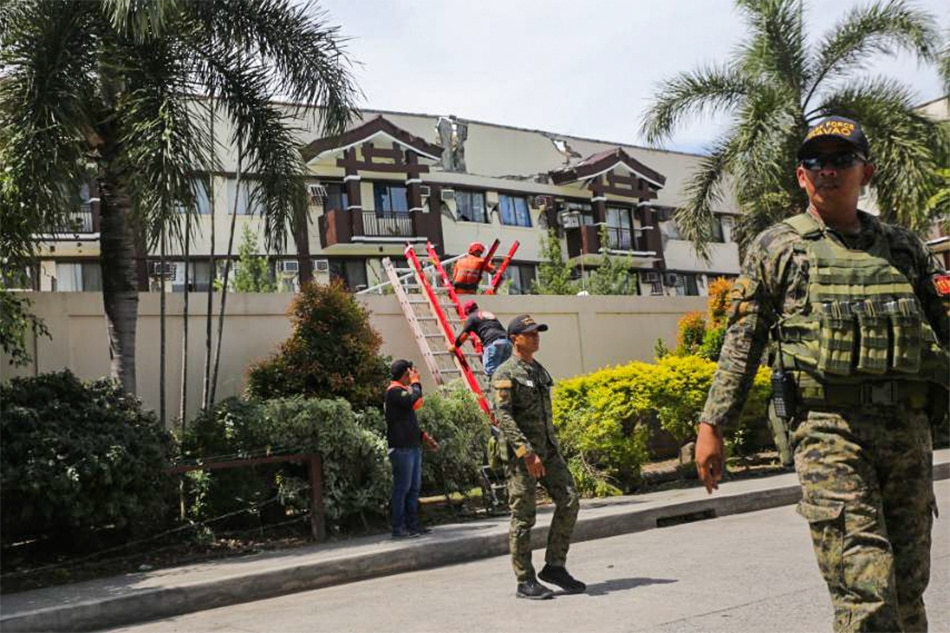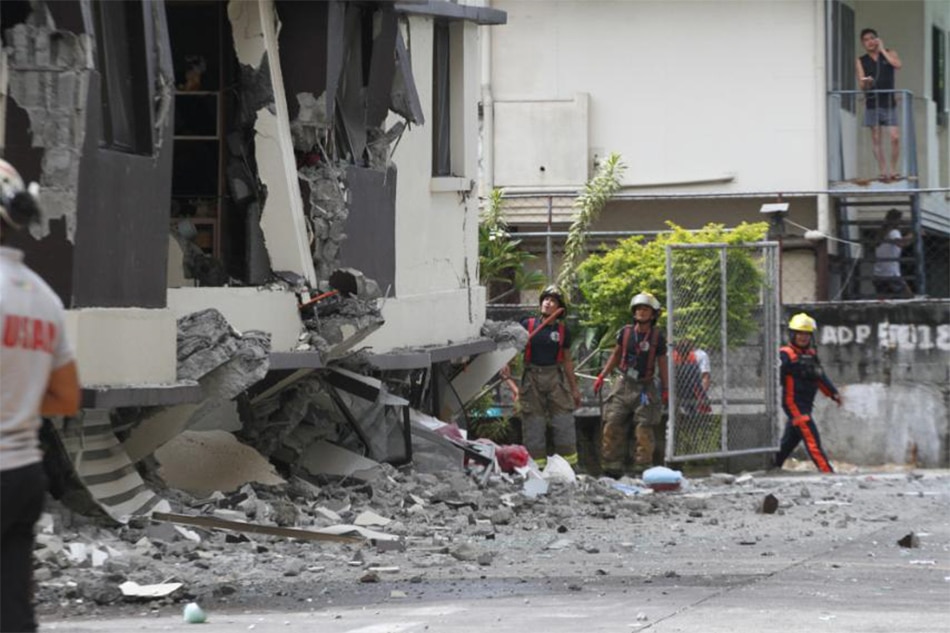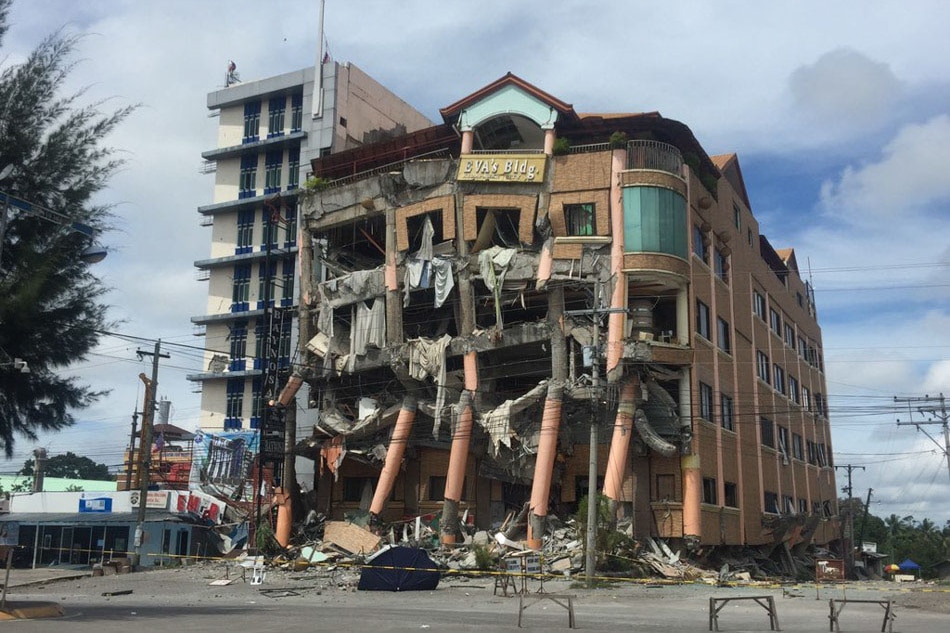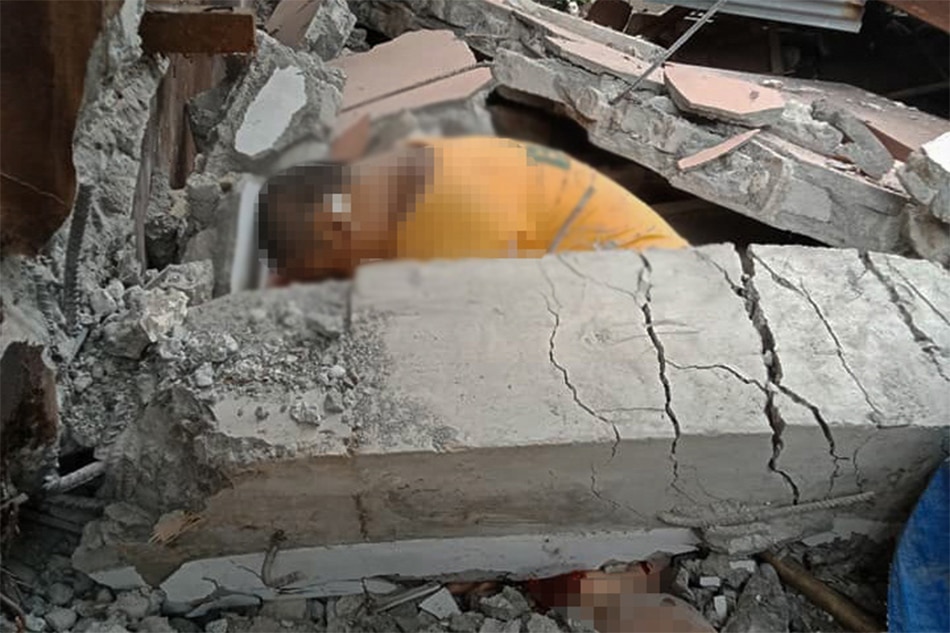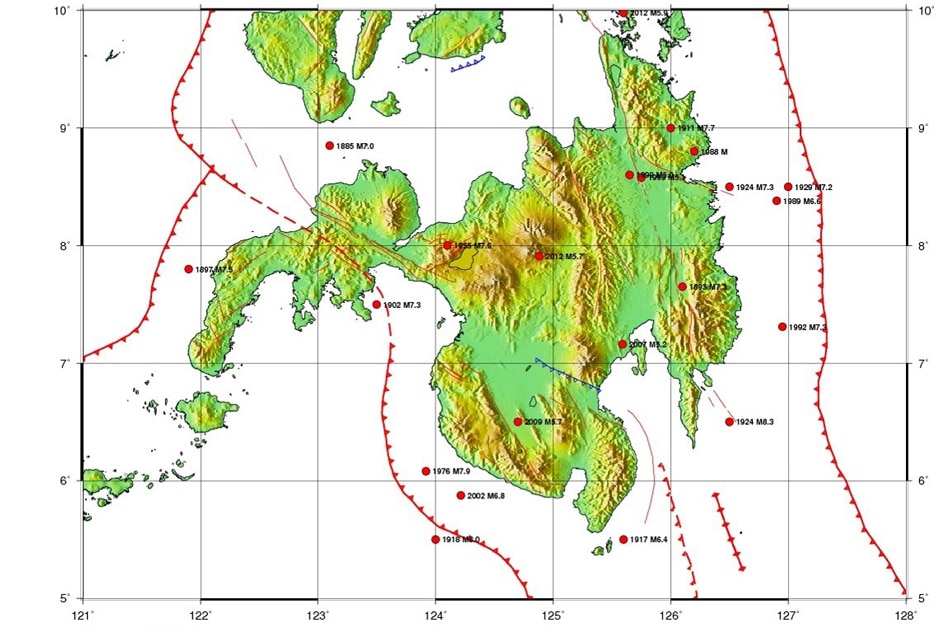'Blind faults'? Phivolcs explains series of strong quakes in Mindanao | ABS-CBN

Welcome, Kapamilya! We use cookies to improve your browsing experience. Continuing to use this site means you agree to our use of cookies. Tell me more!
'Blind faults'? Phivolcs explains series of strong quakes in Mindanao
'Blind faults'? Phivolcs explains series of strong quakes in Mindanao
Kristine Sabillo,
ABS-CBN News
Published Oct 31, 2019 07:57 PM PHT
|
Updated Oct 31, 2019 09:22 PM PHT
MANILA - With Cotabato experiencing a series of strong earthquakes, the Philippine Institute of Volcanology and Seismology (Phivolcs) has reminded the public to be ready for anything, including a much stronger 7.2-magnitude earthquake in that area.
MANILA - With Cotabato experiencing a series of strong earthquakes, the Philippine Institute of Volcanology and Seismology (Phivolcs) has reminded the public to be ready for anything, including a much stronger 7.2-magnitude earthquake in that area.
“Based on the length of this fault in Cotabato, it’s capable of generating a 7.2-magnitude earthquake, said Dr. Toto Bacolcol, associate scientist at Phivolcs.
“Based on the length of this fault in Cotabato, it’s capable of generating a 7.2-magnitude earthquake, said Dr. Toto Bacolcol, associate scientist at Phivolcs.
For years, Metro Manila has been preparing for the “Big One”—a similar 7.2-magnitude earthquake from the West Valley Fault.
Projections of the “Big One” show that up to 34,000 people may die in Metro Manila although it will be much different for Cotabato and its surrounding areas because of differences in population and number of buildings.
For years, Metro Manila has been preparing for the “Big One”—a similar 7.2-magnitude earthquake from the West Valley Fault.
Projections of the “Big One” show that up to 34,000 people may die in Metro Manila although it will be much different for Cotabato and its surrounding areas because of differences in population and number of buildings.
Bacolcol said they are not discounting the possibility that the recent earthquakes could be foreshocks to a stronger earthquake. But they are also hoping that the series of quakes will soon die down and won’t trigger any more major earthquakes.
Bacolcol said they are not discounting the possibility that the recent earthquakes could be foreshocks to a stronger earthquake. But they are also hoping that the series of quakes will soon die down and won’t trigger any more major earthquakes.
ADVERTISEMENT
It reminded him of “earthquake swarms” or small-magnitude earthquakes that cluster in certain areas for several days but he said the ones in Cotabato are different because of their high magnitude.
It reminded him of “earthquake swarms” or small-magnitude earthquakes that cluster in certain areas for several days but he said the ones in Cotabato are different because of their high magnitude.
FAULT SYSTEM?
“It’s the first time, that we've had several strong earthquakes in a span of a few weeks,” he said, adding that this is based only on his two-decade experience with Phivolcs.
“It’s the first time, that we've had several strong earthquakes in a span of a few weeks,” he said, adding that this is based only on his two-decade experience with Phivolcs.
Until now, it is unclear how exactly the October 16, 29 and 31 quakes are interconnected, but several theories are already being explored by Phivolcs.
Until now, it is unclear how exactly the October 16, 29 and 31 quakes are interconnected, but several theories are already being explored by Phivolcs.
“In that area, you have several closely placed faults, near to each other,” Bacolcol said. “It’s possible that one fault would trigger another fault to move. We call that stress transfer.”
“In that area, you have several closely placed faults, near to each other,” Bacolcol said. “It’s possible that one fault would trigger another fault to move. We call that stress transfer.”
During an interview with DZMM, Ishmael Narag, Officer-in-Charge of Phivolcs’ Seismological Observation and Earthquake Prediction Division, enumerated the different scenarios that could have happened: one fault as the cause of all the quakes; certain segments of a fault triggering each other; a fault system, or a series of faults affecting each other.
During an interview with DZMM, Ishmael Narag, Officer-in-Charge of Phivolcs’ Seismological Observation and Earthquake Prediction Division, enumerated the different scenarios that could have happened: one fault as the cause of all the quakes; certain segments of a fault triggering each other; a fault system, or a series of faults affecting each other.
Currently, Phivolcs is looking into the following quakes—including one as far back as July—that might have been caused by the possible fault system:
Currently, Phivolcs is looking into the following quakes—including one as far back as July—that might have been caused by the possible fault system:
July 9, 2019 8:36 pm— 5.6-magnitude earthquake 16 kilometers of Makilala, North Cotabato (10 kilometers in depth)
July 9, 2019 8:36 pm— 5.6-magnitude earthquake 16 kilometers of Makilala, North Cotabato (10 kilometers in depth)
Oct. 16, 2019 7:37 pm— 6.3-magnitude earthquake 23 kilometers of Tulunan, Cotabato (9 kilometers in depth)
Oct. 16, 2019 7:37 pm— 6.3-magnitude earthquake 23 kilometers of Tulunan, Cotabato (9 kilometers in depth)
Oct. 16, 2019 8:09 pm— 5.5-magnitude earthquake 22 kilometers of Tulunan, Cotabato (9 kilometers in depth)
Oct. 16, 2019 8:09 pm— 5.5-magnitude earthquake 22 kilometers of Tulunan, Cotabato (9 kilometers in depth)
Oct. 29, 2019 9:04 am— 6.6-magnitude earthquake 22 kilometers of Tulunan, Cotabato (7 kilometers in depth)
Oct. 29, 2019 9:04 am— 6.6-magnitude earthquake 22 kilometers of Tulunan, Cotabato (7 kilometers in depth)
Oct. 29, 2019 10:42 am— 6.1-magnitude earthquake 13 kilometers of Tulunan, Cotabato (15 kilometers in depth)
Oct. 29, 2019 10:42 am— 6.1-magnitude earthquake 13 kilometers of Tulunan, Cotabato (15 kilometers in depth)
Oct. 31, 2019 9:11 am— 6.5-magnitude earthquake 28 kilometers of Tulunan, Cotabato (6 kilometers in depth)
Oct. 31, 2019 9:11 am— 6.5-magnitude earthquake 28 kilometers of Tulunan, Cotabato (6 kilometers in depth)
All are near Tulunan, Cotabato and are shallow in depth, which is why they have higher intensities or can be strongly felt by people.
All are near Tulunan, Cotabato and are shallow in depth, which is why they have higher intensities or can be strongly felt by people.
Bacolcol said Phivolcs already set up near the Makilala-Malungon fault to study what happened but they won’t have an exact explanation until the aftershocks die down.
Bacolcol said Phivolcs already set up near the Makilala-Malungon fault to study what happened but they won’t have an exact explanation until the aftershocks die down.
He also explained that it is common for them to find “blind faults” that do not manifest on the surface. He said this is why “fault mapping” is a continuing activity.
He also explained that it is common for them to find “blind faults” that do not manifest on the surface. He said this is why “fault mapping” is a continuing activity.
STRONG MINDANAO QUAKES
Historically, Mindanao has experienced a number of strong earthquakes in the last century.
Historically, Mindanao has experienced a number of strong earthquakes in the last century.
Among them is the 7.9-magnitude earthquake in 1976 caused by the Cotabato Trench. Because it was a trench, it generated a tsunami and left more than 6,000 people dead and 2,000 missing.
Among them is the 7.9-magnitude earthquake in 1976 caused by the Cotabato Trench. Because it was a trench, it generated a tsunami and left more than 6,000 people dead and 2,000 missing.
In 1955, 400 people died due to a 7.5-magnitude earthquake in Lanao.
In 1955, 400 people died due to a 7.5-magnitude earthquake in Lanao.
A map shared by Phivolcs also shows magnitude 8 earthquakes in the surrounding area of Mindanao. However, these happened almost a century ago with epicenters off the coast of southern Mindanao.
A map shared by Phivolcs also shows magnitude 8 earthquakes in the surrounding area of Mindanao. However, these happened almost a century ago with epicenters off the coast of southern Mindanao.
In a primer, Phivolcs explained that Cotabato is in one of the seismically active regions in the Philippines due to several active faults in the area: M’lang Fault, Makilala-Malungon Fault, North Columbio Fault, South Columbio Fault, and the western extension of the Mindanao Fault (Cotabato-Sindangan Fault). It also cited the Cotabato Trench as a major source of earthquakes.
In a primer, Phivolcs explained that Cotabato is in one of the seismically active regions in the Philippines due to several active faults in the area: M’lang Fault, Makilala-Malungon Fault, North Columbio Fault, South Columbio Fault, and the western extension of the Mindanao Fault (Cotabato-Sindangan Fault). It also cited the Cotabato Trench as a major source of earthquakes.
In the end, Bacolcol said that while it is impossible to predict when the next earthquake will happen, the best course of action would be to prepare for the worst.
In the end, Bacolcol said that while it is impossible to predict when the next earthquake will happen, the best course of action would be to prepare for the worst.
“We should always be prepared,” he said. “Earthquakes they don’t kill people…It’s the collapse of man-made structures, buildings, retaining walls that do.”
“We should always be prepared,” he said. “Earthquakes they don’t kill people…It’s the collapse of man-made structures, buildings, retaining walls that do.”
He said “preparedness should be done in all levels”—from families up to the local government. He said local governments should make sure that the building code is being followed, and for individuals to always have a go-bag or an emergency kit on hand.
He said “preparedness should be done in all levels”—from families up to the local government. He said local governments should make sure that the building code is being followed, and for individuals to always have a go-bag or an emergency kit on hand.
Read More:
earthquake
Phivolcs
quake
Cotabato
fault
seismology
Mindanao quakes
explainer
Big One
West Valley Fault
ADVERTISEMENT
ADVERTISEMENT


